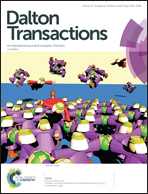Magnetic N-doped Co–carbon composites derived from metal organic frameworks as highly efficient catalysts for p-nitrophenol reduction reaction†
Abstract
Magnetic nitrogenous cobalt–carbon composites were synthesized via calcination of N-ZIF-67, where metal and N atoms were introduced into the conductive carbon matrix formed during carbonization of N-ZIF-67, and were applied, as catalysts, in the reduction reaction of p-nitrophenol, assisted by NaBH4. Characterization of the prepared composites was carefully performed using SEM, TEM, XRD, SQUID magnetometric analysis, XPS and nitrogen adsorption/desorption measurements. Compared to Co@C, which was similarly prepared, the N-Co@C catalyst exhibits much better catalytic activity for the reduction of 4-nitrophenol to 4-aminophenol. The pseudo-first-order rate constant for the N-Co@C catalyst is 4.47 times greater than that for the Co@C catalyst, and its stability shows little change after five reaction cycles. The superior catalytic properties of the N-Co@C catalyst are due to the presence of N moieties. Leaching out the cobalt cores was induced using FeCl3 and HCl to see what the active centers were. The results show that the majority of the catalytic activity is associated with the metal cores.



 Please wait while we load your content...
Please wait while we load your content...